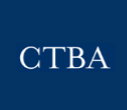A brief overview of Chicago’s affordable housing programs
In Chicago, both the city government and the Chicago Housing Authority (a separate body whose Board of Commissioners is nominated by the mayor of Chicago and confirmed by the City Council) work to provide rental housing priced below market rates and other housing subsidies. Each uses a mix of subsidized developments and vouchers that households can use on the private market. Together, they currently support just under 89,000 rental households, as shown below.
The distinction between programs run by the City of Chicago and those run by the Chicago Housing Authority, as well as the large number of programs run by the City of Chicago, each with its own goals and funding streams, can make it difficult to grasp what is meant by “affordable housing policy.” This post is meant as a basic reference to programs run by the City of Chicago, while including some data from the CHA for context.
According to the Institute for Housing studies (IHS) at DePaul University, in Chicago there are about 350,000 low-income renter households but only about 230,000 rental units affordable to these households. (IHS defines “low-income” as below 150 percent of the poverty line, $18,210 for a single person or $37,650 for a family of four. An “affordable” home is one with a rent of no more than 30 percent of a household’s income.) This “affordability gap” of 120,000 homes is one measure of the need for housing assistance in Chicago.
City of Chicago housing programs and 2017 funding
In its final quarterly update for 2017, Chicago’s Department of Planning and Development (DPD) reports committing about $403 million through at least 17 separate affordable housing programs in 2017, with another 10 programs that received no funding in that year. These programs fall into several categories:
- The production of new subsidized rental housing developments through rehabilitation or construction;
- Ongoing rental assistance for households through vouchers;
- Other kinds of rental assistance programs;
- Subsidies to support homeownership; and
- Subsidies to maintain or renovate owner-occupied homes.
(You can see more detail on these programs from DPD at the bottom of this post.)
Programs run by the city are not necessarily funded by revenue that the city generates. Rather, many are funded through federal or state programs or transfers.
Note, too, that “city-funded” programs use several distinct revenue streams. For example, Mortgage Revenue Bonds are issued by the city but rely on the city’s tax-exempt bonding authority, which is created by the federal government. Meanwhile, the city’s portion of Multi-family Loans and the Rental Subsidy Program comes from the Affordable Housing Opportunity Fund, which is supported by fees developers pay under the Affordable Requirements Ordinance in lieu of providing affordable housing units in new market-rate buildings.
The next chart compares 2017 funding for City of Chicago affordable housing programs to expenditures by the Chicago Housing Authority. The CHA’s spending is broken down into three categories: Rehab & Construction; Property Maintenance of existing public housing buildings; and Vouchers, similar to the Rental Assistance category for the City of Chicago. The federal government provides nearly all CHA funding.
City of Chicago housing programs and 2017 unit production/assistance
In addition to funding, we can also look at the City of Chicago’s affordable housing programs by how many units of housing they create or support, as in the chart below.
Two notes are important for understanding this chart:
- First, all eight Multi Family Rehab & New Construction programs receiving funding in 2017 have been collapsed into a single category. This is how unit production is reported in DPD’s Quarterly Reports because many projects use multiple streams of funding.
- Second, only those programs indicated by a “***” represent new, long-term affordable rental units added to Chicago’s housing stock. Other programs offer ongoing subsidies to low-income households living in privately owned, market-rate housing, such as the Rental Subsidy Program, or represent subsidies to low-income and moderate-income homeowners to purchase or make repairs to market-rate owner-occupied housing. (For more information, see page six of this Chicago Rehab Network report.)
In all, the City of Chicago supported 1,847 new, long-term affordable rental units in 2017. For its part, the Chicago Housing Authority created 684 new units of public housing in 2017.
Description of City of Chicago Programs From DPD
These descriptions come from the 2014–2018 Five Year Housing Plan.
